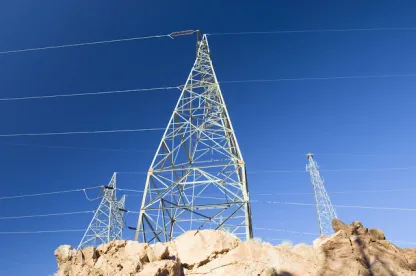Technological advances in distributed generation and battery storage and their consequent falling costs have the potential to significantly change the electric utility business model and regulatory policies. While change seems likely, there are varying views on its scope, probability and timing. Two are presented here.
One perspective is that fundamental changes in the way electricity is produced and delivered are unavoidable. They are coming soon, and new regulatory policies and business models are needed. These are the implications of a new report by the Rocky Mountain Institute (The Economics of Load Defection) that describes the findings of research evaluating the relative economics of taking service from the grid compared to customer-installed resources.
With increasing retail electricity prices and decreasing solar and battery costs, the report finds that the most economic scenario for electricity customers is to install combination solar-plus-battery systems and remain on the grid. While the ultimate impact depends on how quickly customers act on the changing economics and install facilities, the solar-plus-battery systems will eventually provide the majority of customers’ electricity, according to the report. By 2030, just fifteen years from now, grid sales erosion in the northeast U.S. could be as high as 50% for residential customers and 60% for commercial customers.
Utilities are concerned about this potential revenue erosion and are proposing policies to address it. One concern is that part of their declining sales revenue pays for the grid. So one suggested policy is to abolish net metering, under which customers receive a retail rate billing credit for electricity produced by their facilities above what is consumed and thus put on the grid. Another policy is to impose a fixed charge on customers that have on-site generation to help pay for the grid. According to the report, however, both policies will only delay the eventual loss of revenue.
The report observes that customers with solar-plus-battery systems should be able to bring value to the distribution grid by deferring upgrades and providing ancillary services and congestion relief, but realizing these benefits will require reforms on three fronts:
-
New pricing and rate structures that are locational (allowing congestion pricing or other incentives), temporal (time-of-use and real-time pricing) and attribute-based (breaking apart energy, capacity, ancillary and other service components).
-
New business models based on grid-connected customers with distributed resources (like solar and batteries) and a two-way flow of electricity on the grid (not one way from grid generators to customers).
-
New regulatory models that (1) provide fair and equal customer access to distributed resources, (2) recognize, quantify and monetize the benefits and costs of distributed resources, and (3) treat all customer equitably.
In an interview with greentechmedia, Leia Guccione, a co-author of the report, said “there is a real cost to doing nothing. . . . In the absence of more customer choices, customers will take matters into their own hands. And that’s going to lead to sub-optimal outcomes that we see in grid defection — overinvestment and underutilized capital.”
Ken Costello of the National Regulatory Research Institute (NRRI) offers a somewhat different perspective in a recent article in Public Utilities Fortnightly (Rethinking Regulation). Reacting to a “growing consensus” that “the U.S. electric industry will undergo major changes in the coming years,” Costello says “not so fast.” He says that not everyone sees a radically different electric industry and some predict that change will be more gradual, and argues that regulators should be cautious and hedge their decisions to account for uncertainty. With respect to uncertainty, in a recent NRRI paper (Utility Involvement in Distributed Generation: Regulatory Considerations) Costello describes the following challenges to the future growth of distributed generation:
-
Non-dispatchability. An intermittent generating technology such as solar could have lower economic value than a dispatchable generating technology even with similar levelized cost. Intermittency also requires a utility to have increasing amounts of flexible generating capacity that can be ramped up or down with solar’s intermittency.
-
Subsidies. Federal, state, and utility incentives provide substantial impetus to solar PV systems. In the not-too-distant future, distributed generation may have to operate without subsidies.
-
Lowering “soft” costs, i.e., customer acquisition costs, marketing, insurance, financing and contracting, permitting, interconnection and inspection, installation, labor, and O&M expenses.
That said, Costello says “[i]t seems inevitable that change will come but its effect on the electric industry is still in flux and unknown. Both the vision of inevitable radical industry transformation and ‘not much will change’ seems extreme.”




 />i
/>i


